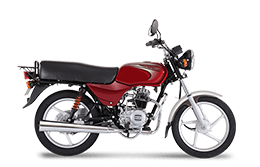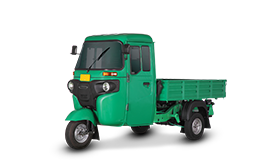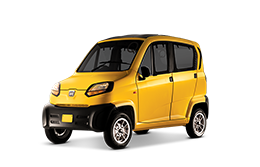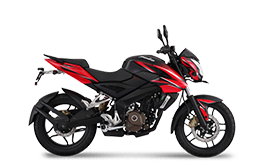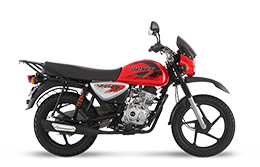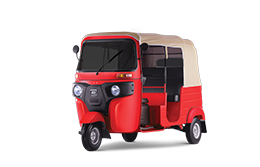Autocar India
Pulsars AS 150 and 200 aim to be adventure sport bikes. We've just stepped off after quick test rides outside Pune.
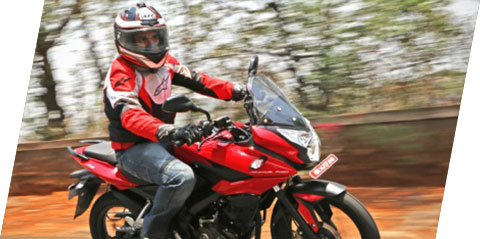 AS or Adventure Sport is the latest range of Pulsar bikes from Bajaj, and both the twins from this range, the AS 150 and 200, come with neatly styled front quarter fairings, that extend sleekly back into tall, clear visors, that provide nice wind blast protection, when riding fast. Both bikes are equipped with potent projector lamp-powered headlights, and there’s deeply grooved, Pulsar- typical fuel tanks, which provide a snug thigh grip when attacking the twisties.
AS or Adventure Sport is the latest range of Pulsar bikes from Bajaj, and both the twins from this range, the AS 150 and 200, come with neatly styled front quarter fairings, that extend sleekly back into tall, clear visors, that provide nice wind blast protection, when riding fast. Both bikes are equipped with potent projector lamp-powered headlights, and there’s deeply grooved, Pulsar- typical fuel tanks, which provide a snug thigh grip when attacking the twisties.Several lightweight alloy parts are offered on both new Pulsar AS bikes, including elegant, slim-spoke rims, rider as well as pillion footrests and the sub-frame units that support these. The Pulsar AS bikes feature backlit switches that work well, and familiar controls all of which are nice enough, such as the levers, grips and mirrors.
The new Pulsar AS range offers comfy-feeling split saddles for rider and pillion, with both new motorcycles looking well proportioned, and smartly turned out. While their front fascias are new, you'd easily recognise both bikes as Pulsars, when looking at them from anywhere behind their fuel tanks.
The AS's 150 and 200 come with new-generation, four-stroke, single-cylinder and multi-plug (two for the smaller engine and three for the 200), four-valve engines that displace 149.5cc and 199.5cc respectively. Both are fed by CV carburettors with the major difference being that the smaller AS 150 is air-cooled, whereas the larger AS 200 is liquid-cooled. The 16.8bhp and 23.2bhp outputs are at an identical 9,500rpm on both motorcycles. The AS 150 engine is all-new, feeling far smoother than any earlier Pulsar 150. It's clearly peppier too now, but has dropped the older bikes typical engine snarl, with a more refined, mellower note in place. The AS 200 has a more grunty engine note, and slightly less refinement compared to the 150, but nothing you'd be bothered by. As expected, the AS 200 offers far quicker performance through a wide powerband.
The AS 150 uses a five-speed gearbox while the AS 200 comes with six-speeds, both shifting smoothly throughout our brief ride in one-down, all-up patterns. You'll know the AS 200 engine if you've already ridden its cousin, the Pulsar 200NS, with both feeling very similar in terms of performance and feel.
Steel-fabricated perimeter frames are used for both new Pulsar AS bikes, a major upgrade from the older generation of 150s, which Bajaj is to continue selling for the moment. Telescopic front suspension is in place, fatter diameter on the AS 200, with monoshock setups at the rear of both AS Pulsars. There are petal rotor-equipped front disc brakes on the AS 150 and AS 200, a disc brake granted at rear for the bigger bike, with a drum on the smaller bike. ABS isn’t offered with either of the two new AS Pulsars. 17-inch wheels are standard on both bikes.
The Pulsar AS 150 and AS 200 come with a comfortable, commuter-friendly upright riding position, and handling is forgiving, with a stable, relaxed feedback always reaching up to you through the handlebars. Ride quality is good, plush and ever-ready to nicely soak up mid-corner road undulations. Bajaj gave us the AS 150 with MRF tyres front and rear, which worked like a treat, offering good grip and feedback even when cranked over at silly lean angles. However, we can't say the same for the Eurogrip rubber on the AS 200, which didn't provide quite the same satisfying confidence levels.
The Pulsars AS 150 and 200 may be underwhelming for riders who hoped for a true adventure-bike feel, lacking in terms of taller stance and really long stroke suspension, with extra plush ride quality that comes with that. Bajaj, however, tells us these are just their very first steps towards a proper entry into that segment, with adventure bike styling explored. Don't be surprised to see the AS series evolve into full-blown adventure bikes in the days to come, depending on how well the market takes to this first generation of AS Pulsars.
The following review has been sourced from Autocar India - May 2015.
The AS's 150 and 200 come with new-generation, four-stroke, single-cylinder and multi-plug (two for the smaller engine and three for the 200), four-valve engines that displace 149.5cc and 199.5cc respectively. Both are fed by CV carburettors with the major difference being that the smaller AS 150 is air-cooled, whereas the larger AS 200 is liquid-cooled. The 16.8bhp and 23.2bhp outputs are at an identical 9,500rpm on both motorcycles. The AS 150 engine is all-new, feeling far smoother than any earlier Pulsar 150. It's clearly peppier too now, but has dropped the older bikes typical engine snarl, with a more refined, mellower note in place. The AS 200 has a more grunty engine note, and slightly less refinement compared to the 150, but nothing you'd be bothered by. As expected, the AS 200 offers far quicker performance through a wide powerband.
The AS 150 uses a five-speed gearbox while the AS 200 comes with six-speeds, both shifting smoothly throughout our brief ride in one-down, all-up patterns. You'll know the AS 200 engine if you've already ridden its cousin, the Pulsar 200NS, with both feeling very similar in terms of performance and feel.
Steel-fabricated perimeter frames are used for both new Pulsar AS bikes, a major upgrade from the older generation of 150s, which Bajaj is to continue selling for the moment. Telescopic front suspension is in place, fatter diameter on the AS 200, with monoshock setups at the rear of both AS Pulsars. There are petal rotor-equipped front disc brakes on the AS 150 and AS 200, a disc brake granted at rear for the bigger bike, with a drum on the smaller bike. ABS isn’t offered with either of the two new AS Pulsars. 17-inch wheels are standard on both bikes.
The Pulsar AS 150 and AS 200 come with a comfortable, commuter-friendly upright riding position, and handling is forgiving, with a stable, relaxed feedback always reaching up to you through the handlebars. Ride quality is good, plush and ever-ready to nicely soak up mid-corner road undulations. Bajaj gave us the AS 150 with MRF tyres front and rear, which worked like a treat, offering good grip and feedback even when cranked over at silly lean angles. However, we can't say the same for the Eurogrip rubber on the AS 200, which didn't provide quite the same satisfying confidence levels.
The Pulsars AS 150 and 200 may be underwhelming for riders who hoped for a true adventure-bike feel, lacking in terms of taller stance and really long stroke suspension, with extra plush ride quality that comes with that. Bajaj, however, tells us these are just their very first steps towards a proper entry into that segment, with adventure bike styling explored. Don't be surprised to see the AS series evolve into full-blown adventure bikes in the days to come, depending on how well the market takes to this first generation of AS Pulsars.
The following review has been sourced from Autocar India - May 2015.



